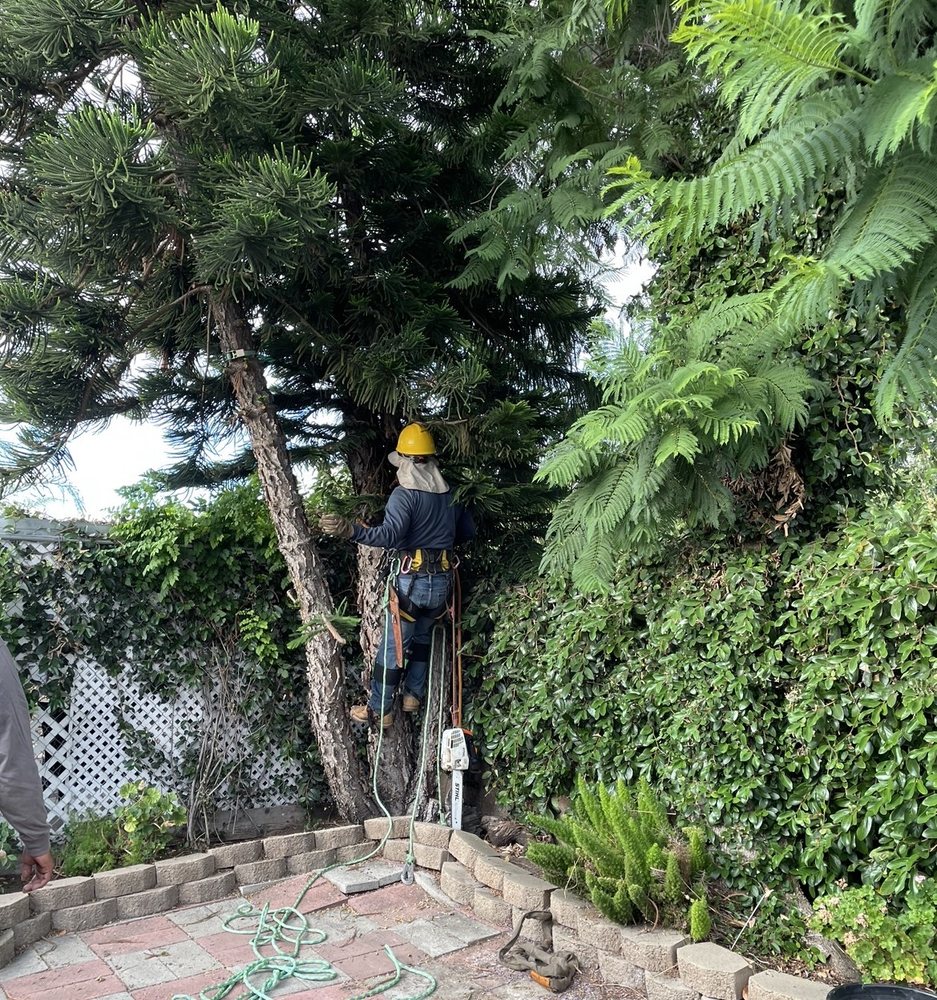When it comes to maintaining the beauty and health of your palm trees, proper trimming is essential. Palm tree trimming not only keeps your trees looking neat and aesthetically pleasing but also promotes their overall well-being. However, it’s important to approach palm tree trimming with caution and proper knowledge to avoid any potential damage or injury.
In this comprehensive guide to palm tree maintenance and removal, we will walk you through the necessary steps and techniques to ensure your palm trees stay healthy and vibrant. We’ll cover everything from when and how to trim your palm trees to understanding the signs that indicate it’s time for removal.
Whether you’re a seasoned gardener or a beginner with a newfound love for palm trees, this guide will provide you with the expertise and confidence to maintain and remove your palm trees with ease. So, grab your pruning shears and let’s dive into the world of palm tree trimming for a flourishing landscape that will leave your neighbors green with envy!
Steps for proper palm tree trimming
Palm trees, like any other plant, require regular maintenance to thrive. Knowing when to trim or remove a palm tree is crucial for its long-term health. Here are some signs that indicate it’s time for palm tree trimming or removal.
1. Overgrown fronds: If your palm tree’s fronds are drooping or touching the ground, it’s a sign that they need to be trimmed. Overgrown fronds can be hazardous during storms and can also hinder the tree’s overall growth.
2. Yellow or brown fronds: Dead or discolored fronds are a clear indication that your palm tree needs attention. Trimming these fronds will not only enhance the tree’s appearance but also prevent the spread of diseases.
3. Unhealthy crown: A palm tree’s crown should be green and vibrant. If you notice a brown or blackened crown, it could be a sign of disease or pest infestation. Trimming the affected area can help prevent further damage.
4. Fruit production: While palm trees are known for their fruit, excessive fruit production can be detrimental to their health. If your palm tree is producing an abundance of fruit, it’s recommended to trim some of them to reduce the strain on the tree.
5. Structural issues: If your palm tree has a leaning trunk or is growing too close to structures or power lines, it may need to be removed. These structural issues can pose a safety hazard and should be addressed promptly.
Remember, it’s always best to consult with a professional arborist to assess the condition of your palm tree and determine the appropriate course of action.
Palm tree removal considerations
Before you embark on palm tree trimming, it’s essential to have the right tools and equipment to ensure a safe and efficient process. Here are some tools you’ll need:
1. Pruning shears: Also known as hand pruners, these are ideal for trimming small branches and fronds. Look for quality shears with sharp blades for clean cuts.
2. Loppers: Loppers are designed to cut thicker branches that pruning shears may not be able to handle. They provide extra leverage and reach, making them a valuable tool for palm tree trimming.
3. Pole saw: A pole saw is a long, extendable saw that allows you to reach high branches without the need for a ladder. It’s perfect for trimming tall palm trees.
4. Safety gear: Safety should be your top priority when engaging in palm tree trimming. Wear sturdy gloves, safety glasses, and a hard hat to protect yourself from falling debris.
5. Ladder: If your palm tree is within reach, a ladder can be used to access higher branches. Ensure the ladder is stable and positioned on level ground.
Remember to clean and disinfect your tools after each use to prevent the spread of diseases between trees.


